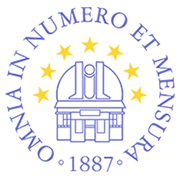

Overview
The group has two branches: one exploring nearby galaxies (NGs), the other studying supernova remnants (SNRs). NGs team is engaged in testing cosmological models in the nearby Universe by modelling the gravitational potential of galaxies, testing scaling relations and studying the distribution and nature of galaxy satellites. SNRs team studies shock waves in SNRs using high-spatial and spectral resolution spectrographs on the world-leading telescopes to accurately trace and isolate shock fronts, allowing a careful analysis of shocks and their ambient medium. In addition, we simulate the expansion of SNRs which provides us with the means to develop analytical models of their hydrodynamic evolution and emission in the inhomogeneous medium. The two teams collaborate on observational strategies, data reduction pipelines, and analysis techniques.
Research goals
NGs branch
- Galaxy dynamics: There are many open questions and challenges on the small-scales in cosmology, some of which are: conspiracy between visible and invisible matter, distribution of satellites and their relation to host galaxies etc. Both dynamic modelling and study of distribution and nature of galaxy satellites enables us to test predictions of different cosmological models.
- Galaxy interactions: The frequency and nature of galaxy mergers is still a great challenge to structure formation. We utilise the Milanković telescope to observe a plethora of low-surface brightness features that emerge in deep images including signs of interactions, shells around galaxies, extended galaxy halos etc. We conduct long-term observational programs with a goal to distinguish between various scenarios that are responsible for formation and preservation of various structures that we observe today in the nearby Universe.
SNRs branch
- Balmer-dominated shocks: SNR shocks are suspected to be the long-sought Galactic cosmic-ray (CR) sources. Since most of the CRs that we detect on Earth consist of protons, finding evidence for accelerated CR protons in SNRs with energies up to ~ 1 PeV is of particular importance. Insight into CR protons is possible either through the gamma-ray spectrum as a result of neutral pion decay, or throughout the optical wavelength window by carefully analysing the Hα-line profiles. The latter shock emission, usually also referred to as optical emission from Balmer-dominated shocks, is the subject of our study.
- Hydrodynamic simulations of SNRs: Simulated remnants are used to study the impact of the inhomogeneous medium on the radio surface brightness-diameter (Σ-D) relation. We plan to extend the model to include shock acceleration physics, and also simulate thermal conduction and radiation losses. Building on current research, we aim to further explore supernova remnants both observationally by gathering new data and theoretically by constantly improving our simulations and models.
Group members:
- Dr. Slađana Knežević (PI), research associate,
- Dr. Ana Lalović, senior research associate,
- Dr. Milena Jovanović, research associate,
- Dr. Petar Kostić, research associate,
- Dr. Michal Bilek, research associate,
- Marko Grozdanović, junior research assistant



